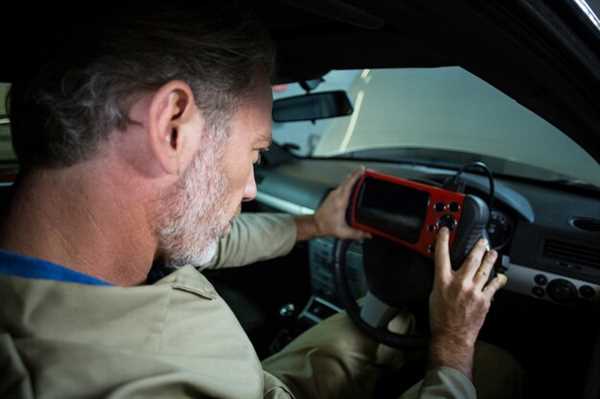
To achieve peak performance on the track, focus on lowering drag coefficients and optimizing downforce. A streamlined body shape, highlighted by smooth contours, plays a pivotal role in minimizing air resistance. Incorporating features such as front splitters and rear wings can significantly influence the vehicle’s grip and stability at high velocities.
Gravity and lift are critical factors; maintaining a low center of mass enhances cornering abilities. Utilize lightweight materials in construction to improve acceleration while ensuring structural integrity. Advanced computational fluid dynamics (CFD) simulations are invaluable tools that allow engineers to refine designs and pinpoint troublesome airflow areas.
Implement adjustable aerodynamic components to fine-tune performance based on track conditions. The ability to alter wing angles or adapt underbody airflow can provide a competitive edge. Regular testing with wind tunnels is essential for validating theoretical models, ensuring the machine adapts effectively to real-world scenarios.
Designing Airflow Management Systems for Enhanced Downforce
Integrate a front splitter to redirect air beneath the chassis. This component significantly increases the downward force on the front tires, improving traction during high-speed cornering.
Utilize side skirts to create a seal between the bodywork and the ground. This modification reduces airflow under the vehicle, maximizing ground effect and enhancing stability at elevated velocities.
Incorporate a rear wing with adjustable angles. The angle of attack can be modified based on track conditions, allowing for increased downforce when grip is needed most, while reducing drag on straights.
Implement a diffusor design at the rear. Properly shaped, it accelerates airflow under the vehicle, generating a low-pressure area that pulls the car downwards.
Employ venturi effects by designing strategic air ducts in the body. Use computational fluid dynamics simulations to refine these ducts for optimal performance based on specific racing environments.
Consider adjustable front canards that allow drivers to tweak downforce levels according to situational requirements. Placement and angle adjustment can drastically affect handling dynamics.
Experiment with active aerodynamics systems. Implement sensors to monitor performance metrics in real-time, automatically adjusting aerodynamic components to achieve the best balance of drag and grip.
- Analyze wind tunnel data for validation of designs.
- Test various configurations during practice sessions.
- Utilize lightweight materials to construct aerodynamic parts to reduce overall weight without sacrificing strength.
Collaborate with engineers specializing in fluid dynamics to continually refine designs based on empirical evidence from track performances.
Utilizing Computational Fluid Dynamics for Shape Optimization

Employ advanced software such as ANSYS Fluent or OpenFOAM for simulating airflow around the vehicle. Start with an initial geometric model, focusing on reducing drag and increasing downforce.
Adjust the car body’s contours and angles to fine-tune the flow across various speed ranges, focusing on the rear end design to minimize turbulence. Use simulations to analyze wake patterns and pressure distributions efficiently.
Conduct iterative tests, modifying parameters like surface roughness and airfoil shapes. Gather data on lift-to-drag ratios, which can guide further refinements.
Integrate design variations into a parametric model, allowing real-time adjustments and rapid prototyping. Validate findings through wind tunnel testing to ensure accuracy of computational results.
Utilize optimization algorithms to automate the search for ideal forms, incorporating constraints like weight and material limits. Solicit feedback from track testing to correlate computational predictions with actual performance metrics.
By systematically applying these techniques, transform theoretical designs into practical applications that achieve superior performance on the track.
Evaluating Real-World Testing Techniques for Aerodynamic Performance

Implement a series of wind tunnel experiments to assess airflow patterns and drag coefficients. Collect data using sensors positioned at strategic points to determine pressure distribution across the vehicle’s surface. Utilize scale models during initial tests to reduce costs while still gaining valuable insights.
Incorporate on-track testing with telemetry systems to monitor real-time performance metrics. Employ high-speed cameras to capture airflow around the vehicle, allowing for visual analysis of vortex formations and separation points.
Conduct computational fluid dynamics simulations to predict aerodynamic behavior before physical testing. Validate these simulations with empirical data gathered from wind tunnel and track tests, identifying discrepancies that may require design adjustments.
Integrate telemetry data with simulation results to create a holistic understanding of the vehicle’s interaction with the environment. Use this information to refine shapes and components, ensuring improvements in overall performance.
For comprehensive analysis, combine various testing methods. Leverage partnerships with research institutions to access advanced equipment and expertise. The insights gained will lead to significant advancements in vehicle design.
Regularly reevaluate testing protocols depending on emerging technologies and methodologies in the field. Keeping abreast of innovations in testing will allow continuous enhancement of vehicle performance.


